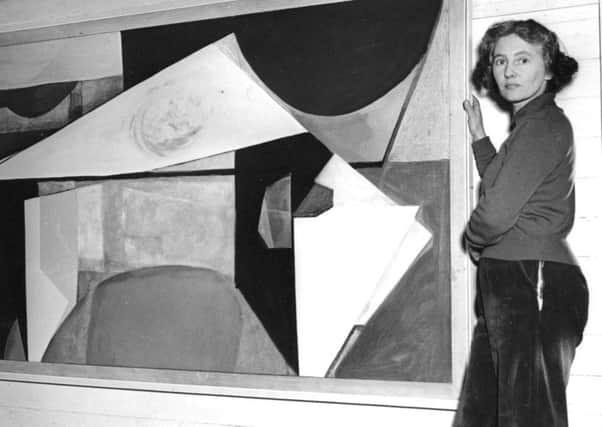Wilhelmina Barns-Graham - the artist inspired by nature


It’s not unusual for women artists to be sidelined, so it has been encouraging over the past few years to see some major shows in our region celebrating those overlooked talents.
Wilhelmina Barns-Graham, who died in 2004 at the age of 92, is one such artist and her work is currently being showcased at the Graves Gallery in Sheffield in Sea, Rock, Earth and Ice, an exhibition on tour from the Jerwood Gallery which acknowledges her extraordinary gift for capturing the spirit of the natural world. Despite the fact that she is considered one of the foremost British artists of the 20th century, for much of her career Barns-Graham did not get equal billing with her male counterparts.
Advertisement
Hide AdAdvertisement
Hide Ad“She is an incredibly significant part of the story of modern British art, but has been pushed aside a bit in favour of her male colleagues,” says Liz Waring, curator of visual art at Museums Sheffield. “It is only recently that she has been given the recognition she deserves.”
Born in St Andrews, Fife in 1912 Barns-Graham’s passion for art began very early and she was determined to become an artist even as a child. “She certainly had the ability for it but her father was very Victorian in his approach and attitudes and he didn’t approve,” says Waring. “Luckily she had a supportive aunt who offered to fund her through art school.” Barns-Graham’s father was duly persuaded and she went to study at Edinburgh School of Art where she excelled. “She got a fantastic grounding in art there – she was a particularly fine draughtswoman,” says Waring. “And because she was such an impressive student she often received scholarships to travel in Europe which broadened her horizons.” With the advent of the Second World War, that all came to a halt and in 1940 she started going down to St Ives where she quickly got involved in its thriving artistic community, becoming friends with Ben Nicholson, Barbara Hepworth and Naum Gabo among others.
She also began to immerse herself in the dramatic geography of Cornwall which she found very inspiring. “She is a key figure in the St Ives group as a bridge between the younger and older generations and that is not promoted enough,” says Waring. “At that time she was still painting quite traditional landscapes and, although she did paint abstracts she kept them private.” Her confidence to display her abstract work more publicly came after a visit to the Grindelwald glacier in Switzerland. “She was fascinated by the glacier – and you can see that the colour and the natural forms gave her the abstract language to develop her artwork,” says Waring. “She worked on those glacier paintings for a number of years and from those she moved on to the rock form paintings.”
The exhibition covers four decades of remarkable work, featuring 35 paintings and drawings which, as the show’s title suggests, focus on sea, rock, earth and ice, natural elements which continued to inspire Barns-Graham throughout her long life and career. Also on display are archive materials such as photographs, posters and sketches. “It was only in the last 20 years of her life that she was beginning to be recognised for the major contribution she made to the development of modern British art,” says Waring. “So it is fantastic for us to be able to show her work in this wonderful way.”
At the Graves Gallery, to March 16. Free entry.